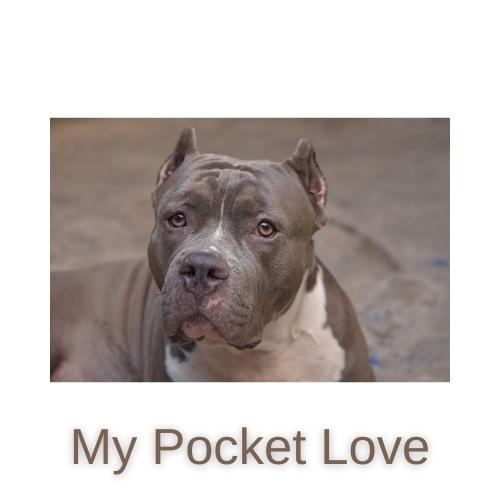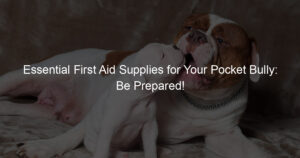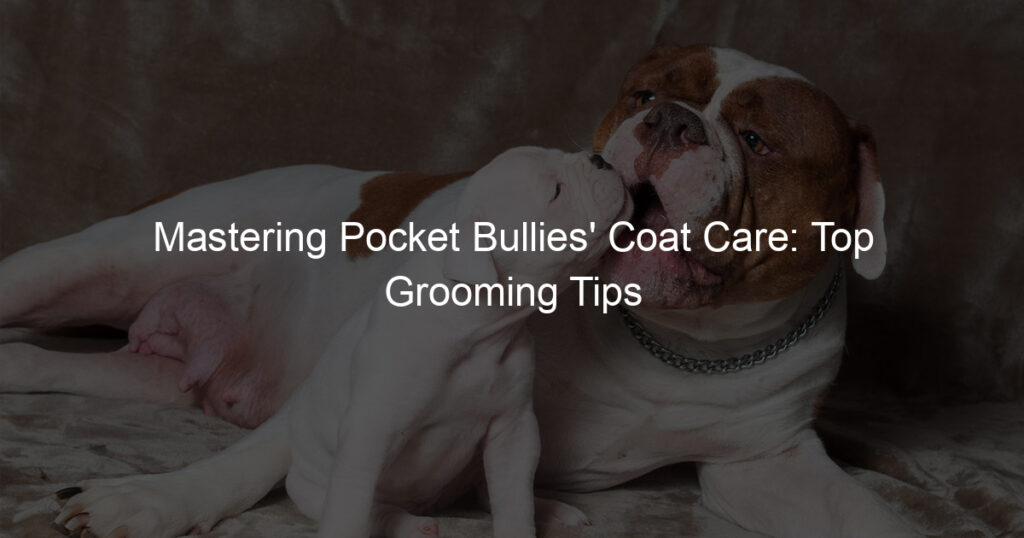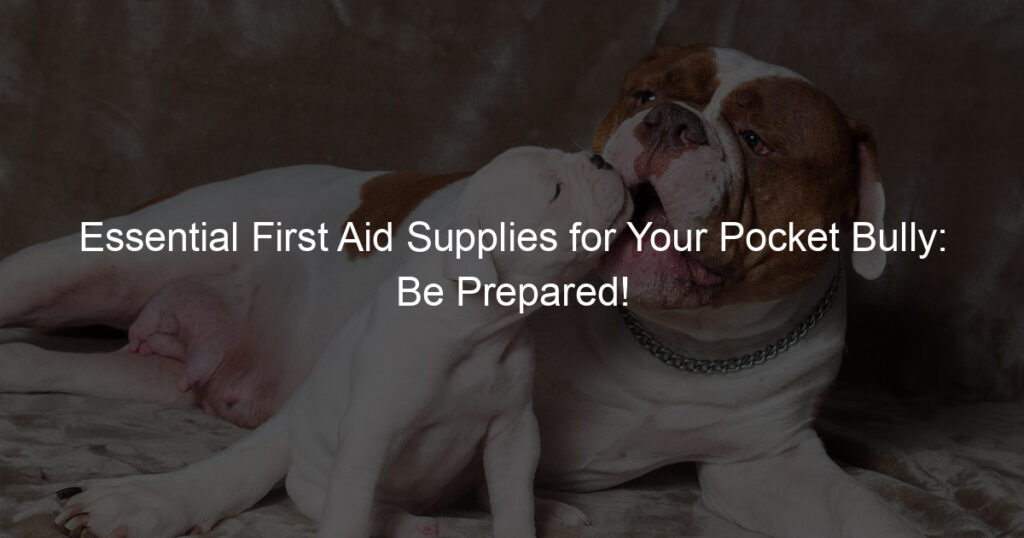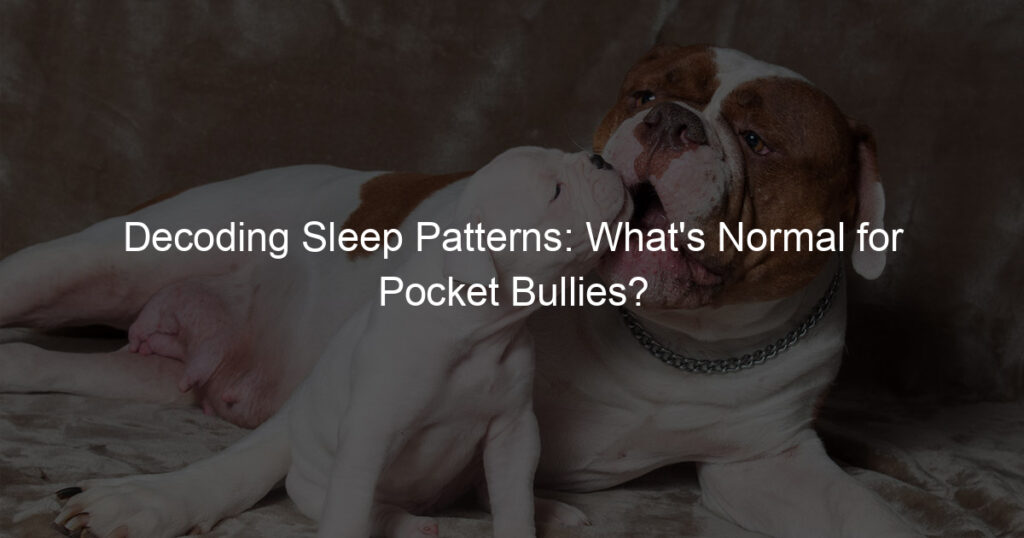Pocket Bullies have gained popularity in recent years for their unique physique, temperament, and size. These compact, muscular, and adorable American Bully breeds have caught the attention of dog lovers who want a powerful yet manageable pet in their homes.
In this article, we will delve into the specifics of Pocket Bully size and weight to give you a better understanding of this intriguing breed.
The American Bully has various size categories, with the Pocket Bully being one of the smallest. Just like any other dog breed, numerous factors play a role in determining the size and weight of Pocket Bullies.
These factors include genetics, gender, age, and environmental influences.
Gaining insight into the Pocket Bully’s growth, size, and weight will help you better predict whether this breed is suitable for your lifestyle and living situations.
By familiarizing yourself with the Pocket Bully’s growth patterns and breed standards, you will know how to provide proper care, training, and nutrition based on their unique needs.
It is essential to remember that each Pocket Bully will slightly differ in size and weight due to individual differences in genetics and environmental factors.
Key Takeaways
- Pocket Bullies are smaller, compact versions of American Bullies with unique size and weight characteristics
- Genetics, gender, age, and environmental factors contribute to the growth, size, and weight of Pocket Bullies
- Understanding the breed’s growth patterns and needs will help you better care for and train your Pocket Bully
The Basics of Pocket Bully Size and Weight
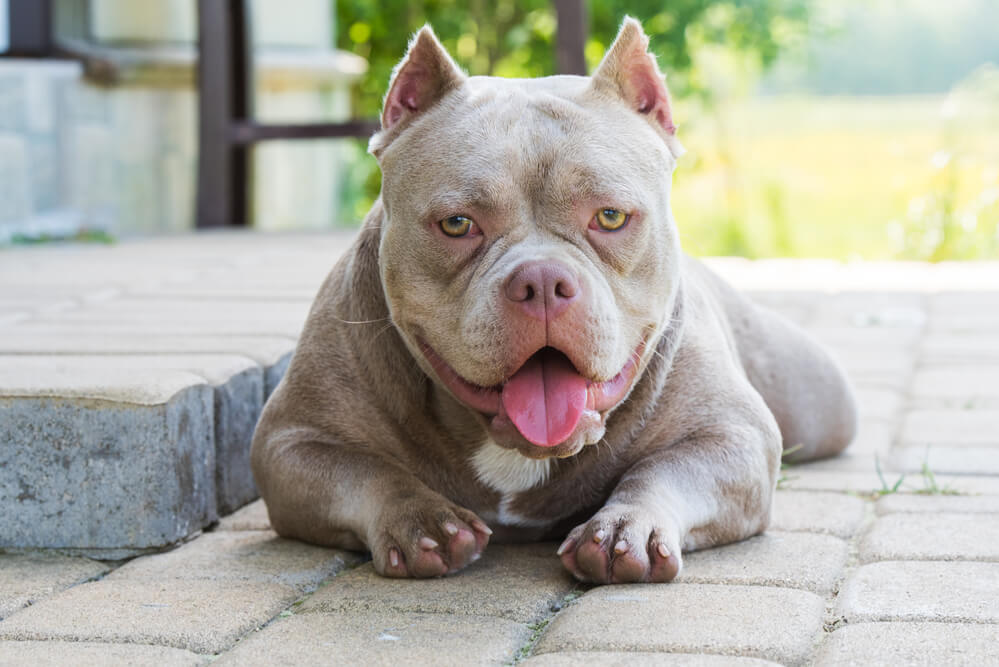
When it comes to the size and weight of a Pocket Bully, it’s important to keep in mind that this breed is muscular, coarse, and compact. As the name suggests, a Pocket Bully is a small dog that falls under the smaller category of the American Bully breed.
The fact that they are miniature in size does not mean they lack the characteristic traits of their larger counterparts.
In terms of weight, I find that an adult Pocket Bully can weigh anywhere between 30 to 60 pounds, with males usually weighing slightly more than females. This depends on their individual genetics and diet.
Nevertheless, it’s important to monitor their weight and ensure they have a well-balanced diet to prevent obesity and maintain their muscular appearance.
When I look at the Pocket Bully’s size, I see that their height ranges from 12 to 16 inches at the shoulder. This small stature makes them an ideal companion for those who may not have the space to accommodate a larger dog but still want the presence of a bully breed.
The compactness of the Pocket Bully makes them a popular choice among enthusiasts who seek a dog that is both strong and functional.
As a muscular breed, the Pocket Bully typically possesses a stocky and powerful build. To maintain this look, I suggest providing ample opportunity for exercise and play.
This will help keep your Pocket Bully in excellent shape and contribute to their overall health.
In conclusion, the Pocket Bully’s size and weight may be smaller than other bully breeds, but they still possess the same muscular and sturdy appearance.
While these compact dogs might not demand as much space, they still require proper care and attention to maintain their physique and health.
Keeping an eye on their weight and including regular exercise can ensure your Pocket Bully’s well-being and happiness throughout their life.
Gender Differences in Size and Weight
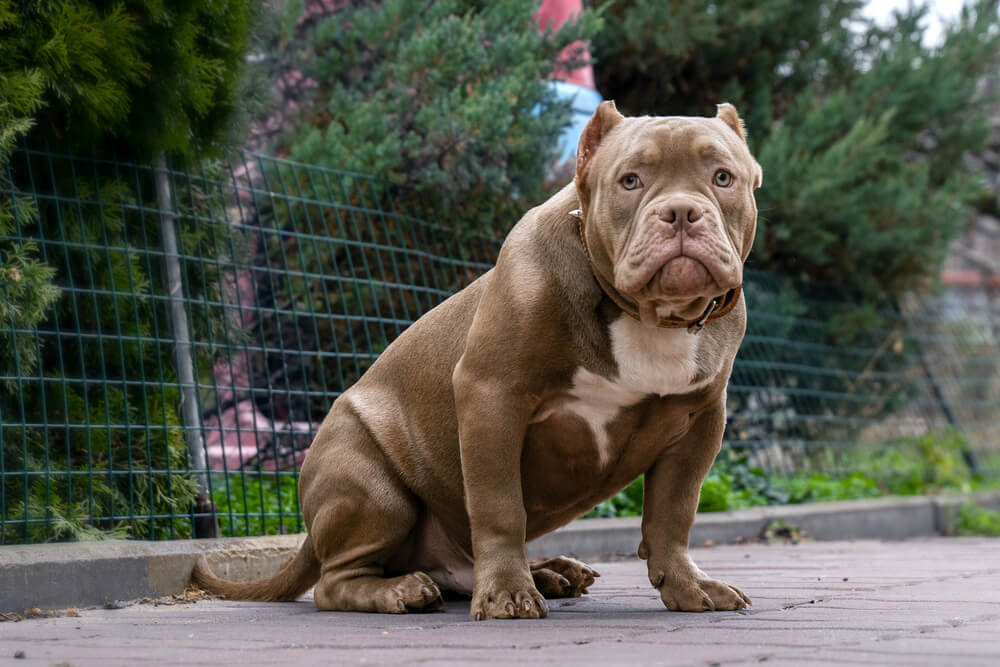
As I observe the Pocket Bully breed, it’s essential to note the gender differences in size and weight. Male Pocket Bullies tend to be larger and more robust, while females are generally more compact and lighter.
From my experience, male Pocket Bullies tend to have more mass and weight, typically ranging from 30 to 60 pounds. On the other hand, females usually weigh between 25 and 50 pounds.
When it comes to height, males are generally around 12 to 16 inches, while females stand at about 11 to 15 inches.
Another noticeable aspect is the proportion. Males often have a broader chest and shorter legs, giving them a more muscular and stocky appearance. Females may have a slightly narrower chest and longer legs, which can make them appear leaner.
This is not to say that one gender is stronger than the other – both male and female Pocket Bullies possess impressive strength and agility for their size.
Despite these general differences, it’s important to remember that every Pocket Bully is an individual with unique characteristics. Some may demonstrate gender differences more or less prominently than others, depending on factors like genetics and environment.
As the owner of a Pocket Bully, my priority is always to ensure my dog’s health and happiness, regardless of gender-related differences in size and weight.
Pocket Bully Growth Chart
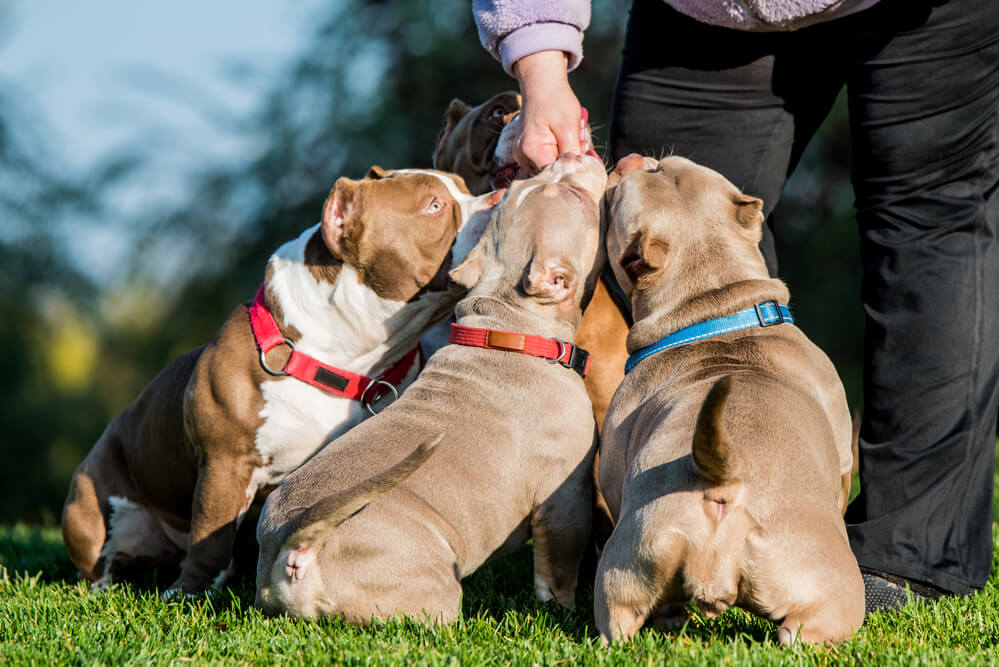
As a Pocket Bully enthusiast, I can confidently say that these dogs grow up to be muscular and well-proportioned despite their smaller size and short legs.
The key to understanding the growth of your Pocket Bully is to be familiar with their growth chart.
During the first 3 months, Pocket Bullies showcased rapid growth. In this phase, they start to gain weight and develop their initial muscular structure.
It’s crucial to provide them with proper nutrition that ensures the right balance of calories, protein, and vitamins. Providing them with regular exercise is also essential in order to create a strong and well-proportioned dog.
From 4 to 6 months of age, Pocket Bullies continue to grow in size but at a slightly slower pace. During this stage, the focus should be on maintaining a proper diet and continuing the exercise routine.
This will help develop their strength and reinforce their muscular appearance.
Between 7 and 12 months, Pocket Bullies reach a much slower growth rate. Their muscular structure will be more defined, and their joints will be stronger. As they approach the age of 1 year, you might notice a plateau in their growth.
Here’s a chart to help understand the Pocket Bully growth stages:
| Age | Weight Range | Size |
|---|---|---|
| 1-3 months | 7-15 lbs (3-7 kg) | Small |
| 4-6 months | 16-30 lbs (8-14 kg) | Medium |
| 7-12 months | 31-57 lbs (15-26 kg) | Large |
| 1+ years | 35-60 lbs (16-27 kg) | Fully Grown |
It’s important to remember that each Pocket Bully is unique and may grow slightly differently than the chart provided. However, having this general guideline will better prepare me for the various growth stages of my Pocket Bully.
Monitoring their growth and providing consistent care, including a healthy diet and proper exercise, will help ensure that my Pocket Bully stays muscular, well-proportioned, and healthy throughout their life.
Influence of Genetics on Size and Weight
As a Pocket Bully enthusiast, I pay close attention to the role genetics play in determining the size and weight of these unique dogs. Genetics play a significant role in the physical characteristics of the Pocket Bully breed, which is a smaller version of the American Bully.
The Pocket Bully inherits genes from both its parent breeds, often resulting in a double dose of genetic influences. These influences can be positive, such as smaller size or specific coat colors like black or brindle, but can also lead to certain health issues.
When two Pocket Bullies are bred together, their offspring will inherit a mix of their genetic traits. The physical attributes of the offspring may vary depending on the specific genes inherited from each parent.
As a result, the size and weight of Pocket Bullies can differ even within the same litter.
Cross-breeding with mixed breeds can also introduce new genetic traits to the Pocket Bully, influencing size and weight.
For example, breeding a Pocket Bully with a smaller breed, such as a Micro Bully, may result in offspring with smaller size and weight while still retaining the distinct physical features of the Pocket Bully.
In conclusion, genetics play a crucial role in determining the size and weight of Pocket bullies.
As an owner or potential owner of a Pocket Bully, understanding these genetic influences can help predict the size of your dog and make informed decisions when selecting a suitable breeding match.
Health Implications Related to Size
As a knowledgeable person in this field, I want to discuss the health implications related to the size and weight of the pocket bully. This breed is known for its compact size, muscular build, and thick body, but these features also contribute to some health issues.
The pocket bully is a genetically modified breed created through selective breeding to achieve its desired size, weight, and physical features.
Due to these breeding practices, the breed may inherit health issues that are commonly seen in other breeds featuring muscular and thick bodies. One of the main concerns with the pocket bully’s size is hip dysplasia.
This condition occurs when the hip joint doesn’t develop properly, causing the joint to deteriorate over time. Hip dysplasia can result in pain, arthritis, and, in severe cases, lameness.
Another health concern related to the pocket bully’s compact size and muscular build is the potential for liver problems. The liver plays a significant role in maintaining the overall health of a dog, and a smaller, more compact body puts more stress on this essential organ.
Proper nutrition and regular veterinary check-ups can help prevent liver issues.
The pocket bully’s broad head and muscular body can also lead to breathing difficulties, as their shorter snouts may not be able to accommodate adequate airflow.
This issue can make it harder for them to cool down, leading to overheating and heat stress. Therefore, it is important to monitor them during activities and make sure they are not overexerting themselves.
In conclusion, while the pocket bully’s size and weight contribute to their unique appearance, they also come with potential health issues.
It is essential to be aware of these concerns, monitor your dog’s well-being, and seek veterinary assistance when needed to maintain their overall health.
Age and Size: Understanding the Growth Pattern
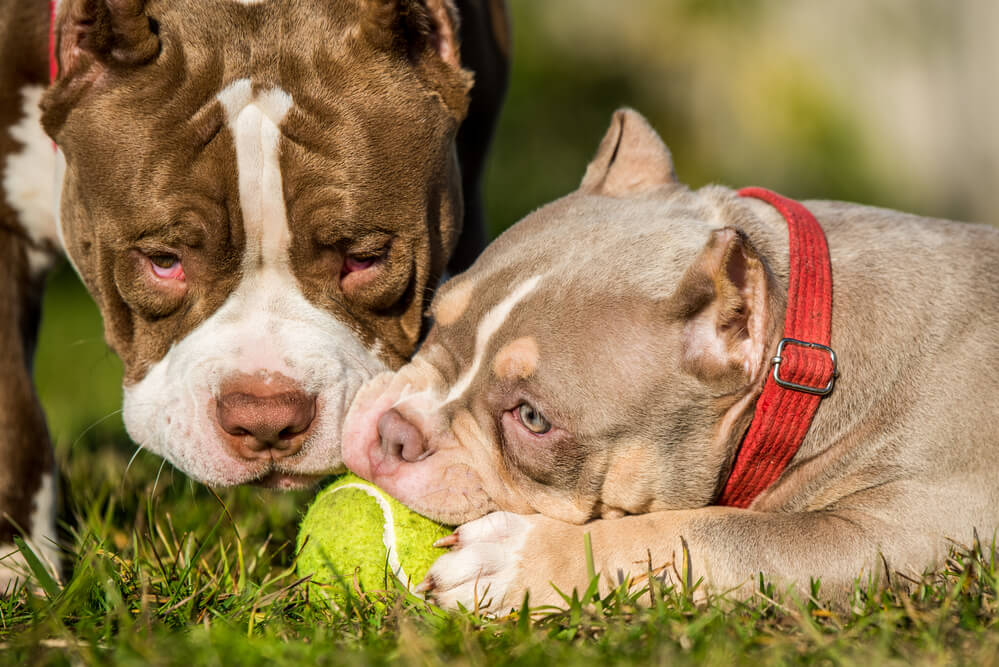
As a pocket bully owner, I have closely studied and observed the growth patterns of these miniature muscular canines. Pocket bullies grow at different rates, and several factors can influence their size, strength, and weight.
During the initial months of a pocket bully’s life, they experience rapid growth. By the time they reach three months of age, their weight already ranges from 10-15 lbs.
By six months, a pocket bully can weigh anywhere between 25-35 lbs, showcasing their energetic and strong bodies.
It is important to remember that pocket bullies grow in size and gain strength throughout their adolescent stage. By the time they reach one year, the average pocket bully’s weight varies between 35-50 lbs.
These weights typically depend on factors such as genetics, nutrition, and exercise routines.
As pocket bullies mature into adulthood, their growth rate slows down. They reach their full adult size and weight at around 18-24 months of age. During this time, their muscle mass and strength continue to develop.
A fully grown adult pocket bully has an average height of 12-16 inches at the withers, with the males being slightly larger than the females.
Monitoring the growth of a pocket bully can be done with the help of a pocket bully’s age and weight chart. This chart tracks the general growth pattern of these dogs but is not an exact measurement tool, as individual differences will still exist.
The chart indicates the following growth milestones for pocket bullies:
| Age | Average Weight (Males) | Average Weight (Females) |
|---|---|---|
| 3 months | 10-15 lbs | 7-12 lbs |
| 6 months | 25-35 lbs | 20-30 lbs |
| 12 months | 35-50 lbs | 30-45 lbs |
| 18 months | 40-60 lbs | 35-50 lbs |
| 24 months | 45-65 lbs | 40-55 lbs |
As an owner, keeping track of my pocket bully’s growth and development helps ensure that they remain healthy and strong.
Good nutrition, proper exercise, and veterinary check-ups all contribute to maintaining their ideal size and strength.
Comprehending the Standard of the Breed
As a knowledgeable enthusiast of the American Bully breed, I can share with you the key aspects that help define the Pocket Bully, which is one of the four recognized sizes of this breed.
The American Bully Kennel Club (ABKC) and the United Kennel Club (UKC) both have guidelines that dictate the breed standard I will be discussing here. It’s essential for breeders to adhere to these standards to keep the breed consistent and healthy.
Pocket Bullies are a smaller version of the American Bully breed, and their distinctive size sets them apart from other bully breeds. Their height ranges between 17 to 20 inches at the withers, and males generally weigh between 30 to 60 pounds, while females can weigh anywhere from 25 to 50 pounds.
Because of their compact size, Pocket Bullies are desirable for those who want an American Bully but may have limitations in terms of living space.
Through selective breeding, breeders aim to maintain the breed’s specific physical attributes.
The most striking feature of the Pocket Bully is their muscular build, which showcases their strength and agility. A broad chest, strong back, and thick, well-defined legs are the hallmarks of the Pocket Bully.
Furthermore, their medium-sized, round eyes come in various colors, adding to their complex and attractive appearance.
In addition to their physical attributes, the breed standard also addresses temperament. Despite their intimidation factor, Pocket Bullies are known to be affectionate, social, and great with kids. They bond deeply with their families and are known to be protective in nature.
When assessing a Pocket Bully, both the American Bully Kennel Club and the United Kennel Club emphasize the importance of a well-rounded temperament that matches their physical prowess.
Although the American Bully breed is well-established, it is essential to understand that the American Kennel Club (AKC) does not recognize it.
Consequently, mixed-breed dogs that appear similar to Pocket Bullies may not adhere to the breed standard and could lack the desirable attributes discussed.
The Pocket Bully is a distinctive size variant of the American Bully breed that is charming in both size and character.
As an enthusiast, appreciating and preserving the breed standard set by the ABKC and UKC is vital to maintaining and promoting this remarkable breed.
Different Types and Sizes of American Bully
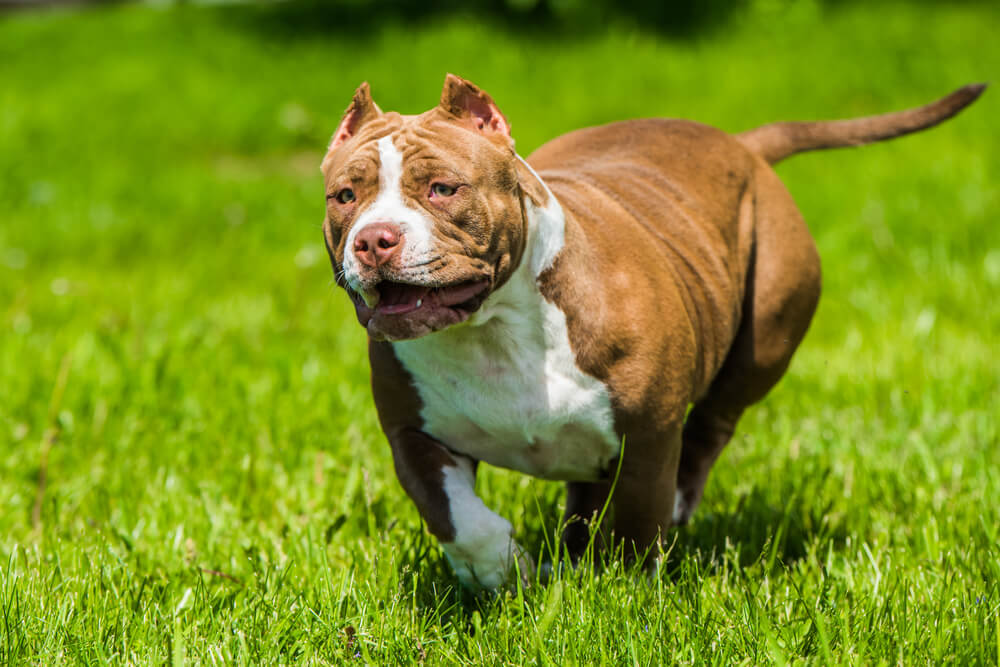
When it comes to American Bullies, there are different types and sizes that breeders and enthusiasts can choose from. In this section, we will delve into the various classifications of these dogs, focusing particularly on the Pocket Bully.
The Pocket Bully is a small dog, a variety of the American Bully that typically weighs around 30 to 50 pounds and stands around 14 to 18 inches in height.
Despite its size, this breed is known for its muscular and compact build. They are well-suited for apartment living due to their small stature and lower exercise requirements as compared to other American Bully types.
One popular type is the XL American Bully. These dogs are significantly larger than the Pocket Bullies, weighing between 80 to 150 pounds and measuring 23 to 27 inches in height.
With a muscular and proportionate build, the XL American Bully is an impressive-looking dog.
Another variety is the Classic American Bully. This type exhibits a more balanced and moderate appearance than other varieties like the Extreme or the XL.
True to its name, the Classic American Bully resembles the original American Bulldog, with height and weight ranging between 17 to 20 inches and 50 to 80 pounds, respectively.
The Extreme American Bully, on the other hand, showcases a more exaggerated version of the breed’s features. With an ultra-wide chest, brawny legs, and a stockier build, this type of American Bully is poised to make a statement.
Similar in size to the Classic, these dogs can weigh between 50 to 80 pounds and stand 17 to 20 inches tall.
In addition to these distinct types, American Bullies come in a variety of colors. Breeders and enthusiasts will find these dogs in shades of fawn, blue, black, chocolate, and even tricolor combinations.
It’s important to keep in mind that, as a prospective owner, you should choose a type of American Bully that fits your needs and lifestyle.
Ensure that you’re working with a reputable and responsible breeder who adheres to ethical breeding practices and provides you with a healthy and well-balanced dog.
Coat and Color: Do they Influence the Size?
As a Pocket Bully enthusiast, I have come to understand that the size and weight of these adorable dogs should not be confused with their coat colors or patterns.
Pocket Bullies come in a variety of colors, including blue, red, brown, fawn, white, black, and merle. These colors do not have any impact on the dog’s size, as their size is determined by their genetics and breeding.
In my experience, I’ve found that Pocket Bullies have a short and smooth coat that requires minimal grooming. Regardless of their coat color, all Pocket Bullies will benefit from regular brushing to keep their coats healthy and shiny.
It’s worth noting that the frequency of brushing may vary slightly based on the shade of the coat.
For example, lighter-colored Pocket Bullies, such as white or fawn, may require more frequent brushing due to their coats being more prone to showing dirt and debris.
While it’s important to admire the beautiful coat and color of a Pocket Bully, owners should not let these factors influence their perception of the dog’s size and weight. A Pocket Bully’s size is primarily determined by factors such as genetics, diet, and exercise.
Coat and color do not have a direct correlation with the size and weight of a Pocket Bully. It is essential for potential owners to understand this and focus on providing proper care, diet, and exercise to ensure their dog remains healthy and happy regardless of its coat color or pattern.
Feeding and Exercise: Impact on Size and Weight
In order to maintain a healthy size and weight for my Pocket Bully, I make sure to provide them with proper nutrition and exercise. Nutrition plays a crucial role in determining the overall size and weight of a Pocket Bully.
Feeding them high-quality dog food with essential nutrients, including proteins, fats, and carbohydrates, ensures proper growth and development. It’s important to avoid overfeeding, which can lead to obesity and other health issues.
I also include protein supplements in my Pocket Bully’s diet to support their muscle growth and strength. However, I always consult with my veterinarian before introducing any new supplements to ensure that they are appropriate for my dog’s size, age, and activity level.
Exercise is another factor that affects the size and weight of my Pocket Bully. Regular physical activity helps to keep their weight in check and promotes muscle development, contributing to their ideal size.
I engage my Pocket Bully in different types of exercise, such as walking, jogging, playing fetch, and agility training, to provide them with a well-rounded exercise routine.
During exercise, it’s essential to take note of my Pocket Bully’s energy levels and any signs of fatigue. Over-exercising can lead to health issues and may negatively impact their growth.
I make sure to strike the right balance between exercise and rest to ensure that my Pocket Bully stays healthy and maintains their ideal size and weight.
In summary, proper nutrition and exercise are both crucial factors in determining the size and weight of my Pocket Bully.
Providing a balanced diet and appropriate exercise routine can help my dog reach their full potential and live a healthy, happy life.
Training Based on Size and Weight
As a Pocket Bully owner, I understand the importance of training based on my dog’s size and weight. Pocket Bullies are smaller than their American Bully counterparts, with sizes ranging from 12 to 16 inches in height.
These dogs can weigh between 30 to 50 pounds. Despite their small stature, they are gentle, loyal, loving, affectionate, and protective, making them excellent family pets.
When I began training my Pocket Bully, the first thing I considered was their weight and size. Since they are smaller dogs, I wanted to ensure that my training methods would not be too harsh or inappropriate for them.
I use gentle training techniques, including positive reinforcement and clicker training. This approach helps instill good behavior in Pocket Bullies and also strengthens the bond between the dog and owner.
I also understand that Pocket Bullies are strong for their size and may not realize their own strength.
Therefore, during training sessions, I pay close attention to body language cues and make sure my dog doesn’t become overly excited or dominant, which is essential for maintaining control.
Another factor I consider in training my Pocket Bully is their inherent loyalty and protectiveness. I foster these traits by socializing them with other dogs and people, which helps them become more confident and well-rounded.
During socialization, I ensure my dog learns appropriate behavior, such as greeting other dogs calmly and not becoming overprotective or aggressive.
In conclusion, training a Pocket Bully based on size and weight requires a gentle approach, attentiveness to the dog’s body language, and an understanding of their loyal and protective nature.
When done correctly, this training ensures a well-behaved and happy family companion.
Cost Implications: Size, Weight, and Health
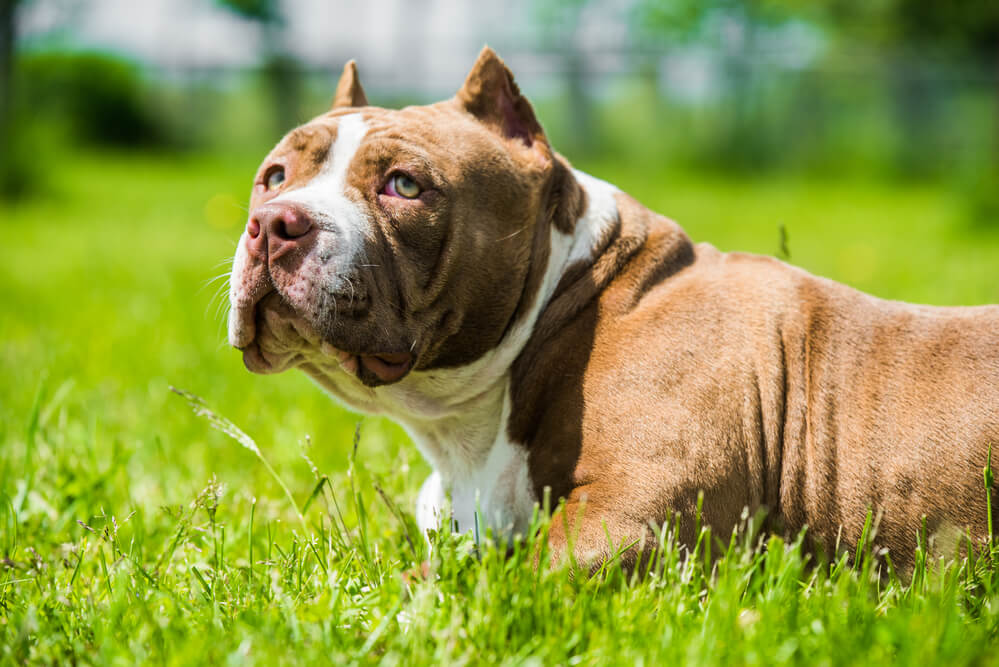
As a pocket bully owner, I know that the size and weight of my dog impact various costs associated with their care. Pocket bullies are a smaller version of the American Bully, typically weighing between 30-60 pounds with a height range of 12-16 inches.
This muscular build means that the cost of feeding, grooming, and maintaining their health can vary.
I have observed that pocket bullies require a high-quality diet due to their muscular build. Their diet and feeding amounts will depend on their weight, and as such, owners should expect to spend more on food for heavier or more muscular dogs.
When it comes to health, I have found that regular vet visits are essential for my pocket bully’s well-being. Yearly vaccinations, check-ups, and preventative care should be factored into the cost of owning a pocket bully.
Further, some of these dogs may be prone to health issues such as hip dysplasia and allergies, which may require veterinary attention and further expenses.
Something I keep in mind when owning a pocket bully is the importance of early socialization. This breed may have a strong Patterdale Terrier influence, so proper training and socialization must be considered when looking at the overall cost.
Investing in training classes and socialization opportunities not only ensures a well-behaved pet but also helps create a happier, healthier pocket bully in the long run.
The cost implications of owning a pocket bully include expenses related to their size, weight, and health. Factors such as food, veterinary care, and training contribute to the overall expenses of owning this breed.
As an owner, it’s essential to be aware of these costs and be prepared to provide the necessary care for my pocket bully.
Conclusion
In my experience, the Pocket Bully’s size and weight are some of its most notable features. Typically weighing between 30 to 60 pounds, they are quite muscular and compact, making them an ideal pet for individuals with space constraints.
Their height is usually between 12 and 17 inches at the shoulders, which contributes to their distinctive appearance.
Despite their smaller stature, Pocket Bullies are both strong and agile. Their muscular build is often a result of quality breeding programs that focus on promoting athleticism and proper structure.
It is crucial, as a prospective owner, to source a reputable breeder for the best traits in your future pet.
Given the importance of exercise for the Pocket Bully’s physical and mental health, I cannot emphasize enough the need for regular walks, mental games, and age-appropriate physical activities.
Not only do these activities help maintain their ideal weight, but they also strengthen their muscle tone and overall physique.
To sum up, the Pocket Bully’s size, weight, and unmistakable appearance are all essential aspects to consider and appreciate.
By ensuring proper care, exercise, and sourcing from reputable breeders, this breed’s unique characteristics can be preserved and celebrated.
Frequently Asked Questions
How much do pocket bullies weigh on average?
As a pocket bully owner, I’ve found that their weight can vary, but they typically weigh around 30 to 50 pounds on average. Males tend to be heavier than females, while puppies are considerably lighter.
Keep in mind that individual pocket bullies can fall outside this range, and a healthy weight will depend on factors like genetics and activity level.
What is the typical size of a pocket bully?
Pocket bullies are a class of smaller American Bullies. In my experience, these dogs generally have a height of 12 to 16 inches at the withers. Males may be slightly larger than females, but both sexes are compact and muscular, giving them their distinctive appearance.
Are there size and weight charts available for American Bullies?
Yes, there are size and weight charts available for American Bullies, which include pocket bullies. These charts help owners monitor their dog’s growth and development.
It’s important to remember, though, that size and weight can vary between individual dogs, and the charts are only guidelines.
Do pocket bully sizes vary with age?
In my observation, pocket bully sizes do indeed vary with age. Puppies are smaller and will continue to grow until they reach adulthood, usually between 12 and 18 months of age.
It’s common for pocket bullies to experience growth spurts followed by periods of slower growth. Each dog grows at their own pace, so if you have concerns about your pet’s size or growth, consult your veterinarian.
What factors can affect a pocket bully’s weight and size?
Several factors can affect a pocket bully’s weight and size. Genetics plays a significant role, as some dogs are simply predisposed to being larger or smaller than others.
In addition, diet, exercise, and overall health can influence a dog’s growth and size. If you want to ensure your pocket bully reaches their full potential, it’s important to provide a balanced diet and regular exercise.
Are there weight calculators specific to pocket bullies?
While there may not be weight calculators designed exclusively for pocket bullies, there are general dog weight calculators accessible online. These allow you to input your dog’s breed, age, weight, and other factors to estimate their ideal weight range.
Nonetheless, it’s essential to remember that these calculators are only guidelines. Always consult your veterinarian if you have concerns about your dog’s growth or weight.
